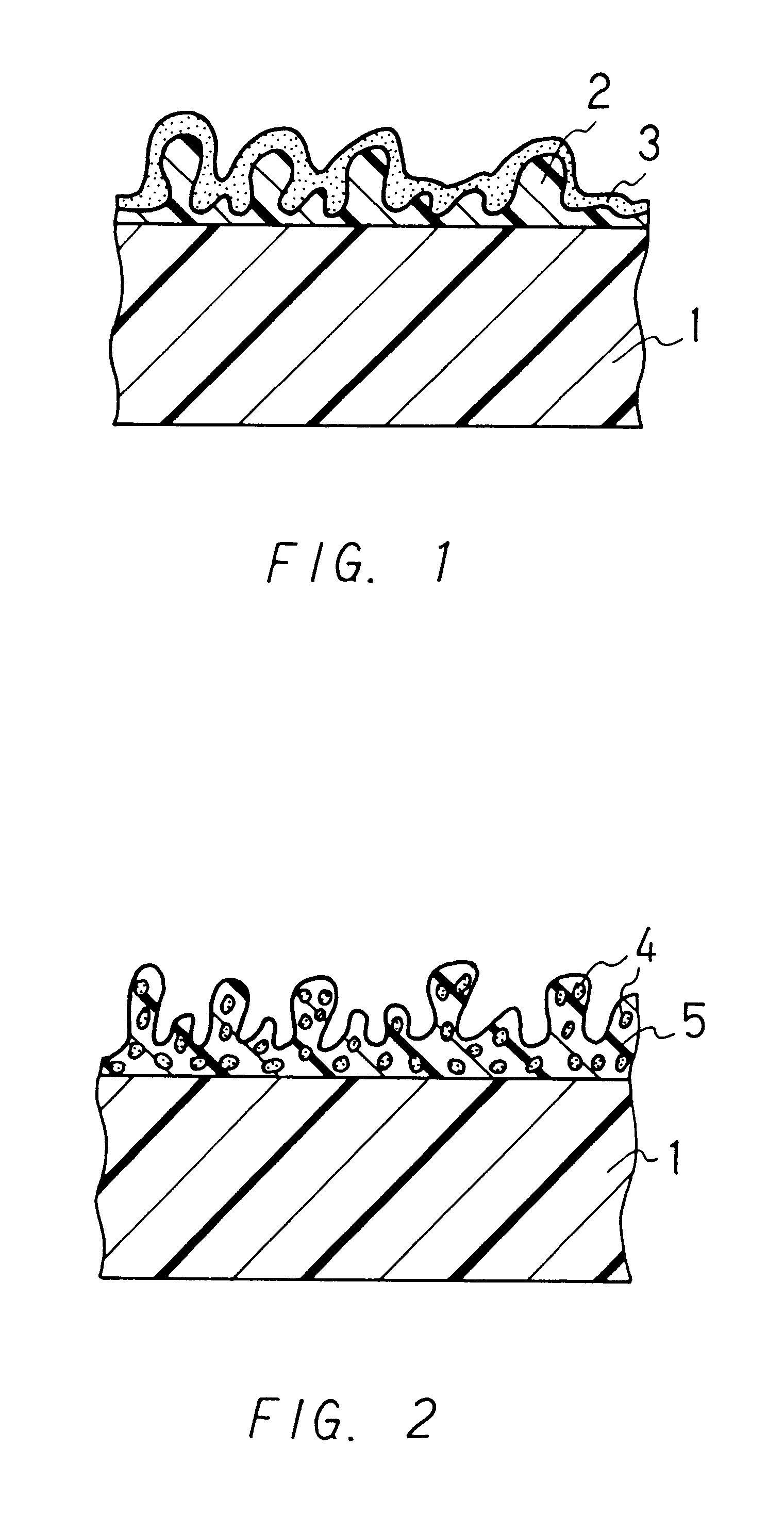Composite reverse osmosis membrane having a separation layer with polyvinyl alcohol coating and method of reverse osmotic treatment of water using the same
a reverse osmosis membrane and polyvinyl alcohol technology, applied in reverse osmosis, separation processes, filtration separation, etc., can solve the problems of insufficient osmosis membranes and conventional after treatment methods, and achieve high salt rejection, high water permeability, and high fouling tolerance
- Summary
- Abstract
- Description
- Claims
- Application Information
AI Technical Summary
Benefits of technology
Problems solved by technology
Method used
Image
Examples
example 2
After manufacturing a reverse osmosis composite membrane by interfacial polycondensation in the same manner as in Example 1, polyvinyl alcohol (PVA) having a saponification degree of 99% was dissolved in a 1:1 solution containing isopropyl alcohol (IPA) and water at a concentration of 0.25 wt. %. The reverse osmosis composite membrane was coated with this PVA solution by dipping and dried at 130.degree. C. for 5 minutes to form a thin layer having an average thickness of about 0.1 .mu.m. The membrane was evaluated by feeding a 1,500 ppm NaCl solution at a pressure of 15 kg / cm.sup.2 and a temperature of 25.degree. C. Then, a permeation test of industrial water (28 hours) was performed by using the membrane at a pressure of 15 kg / cm.sup.2 and a temperature of 25.degree. C., and the change in flux due to fouling was measured. Furthermore, the surface of the membrane was washed with oxalic acid (pH=2, 1 hour). A change in the flux of ultrapure water before and after the permeation test ...
example 3
After manufacturing a reverse osmosis composite membrane by interfacial polycondensation in the same manner as in Example 1, polyvinyl alcohol (PVA) having a saponification degree of 99% was dissolved in a solution of isopropyl alcohol (IPA) and water (IPA:H.sub.2 O=3:7). The surface of the composite reverse osmosis membrane obtained by the above-described method was coated with a 0.13 wt % PVA solution by dipping, and dried at 130.degree. C. for 5 minutes to form a thin layer. Furthermore, in order to avoid the some portions being left uncoated, the membrane was again coated, by dipping, with a solution in which 0.1 wt % of polyvinyl alcohol (PVA) was dissolved in a solution of isopropyl alcohol (IPA) and water (IPA:H.sub.2 O=3:7), and dried at 130.degree. C. for 5 minutes. As a result, a reverse osmosis membrane was obtained. The surface zeta (.zeta.) potential of the reverse osmosis membrane was the same as that shown in FIG. 3.
For evaluation of fouling tolerance, a decrease in f...
example 4
An aqueous solution in which 3.0 wt. % of triethylamine, 6.0 wt. % of camphor sulfonic acid, and 5.0 wt. % of isopropyl alcohol were added to an aqueous solution containing 3.0 wt. % of m-phenylenediamine and 0.15 wt. % of sodium lauryl sulfate was contacted with a microporous polysulfone support film for several seconds, and the excess solution was removed to form a layer of the solution on the support film
Next, the surface of such a support film was contacted with an IP1016 (isoparaffin hydrocarbon oil manufactured by Idemitsu Petrochemical Corporation) solution containing 0.20 wt. % of trimesic acid chloride and 0.05 wt. % of isopropyl alcohol, and was then held in a hot air dryer at 120.degree. C. for 3 minutes. Consequently, a skin layer was formed on the support. Thus, a reverse osmosis composite membrane was obtained.
Then, polyvinyl alcohol having a saponification degree of 99% (n=2,000) was dissolved in a solution containing isopropyl alcohol and water in the ratio of 3:7 to...
PUM
| Property | Measurement | Unit |
|---|---|---|
| temperature | aaaaa | aaaaa |
| pH | aaaaa | aaaaa |
| thickness | aaaaa | aaaaa |
Abstract
Description
Claims
Application Information
 Login to View More
Login to View More - R&D
- Intellectual Property
- Life Sciences
- Materials
- Tech Scout
- Unparalleled Data Quality
- Higher Quality Content
- 60% Fewer Hallucinations
Browse by: Latest US Patents, China's latest patents, Technical Efficacy Thesaurus, Application Domain, Technology Topic, Popular Technical Reports.
© 2025 PatSnap. All rights reserved.Legal|Privacy policy|Modern Slavery Act Transparency Statement|Sitemap|About US| Contact US: help@patsnap.com



